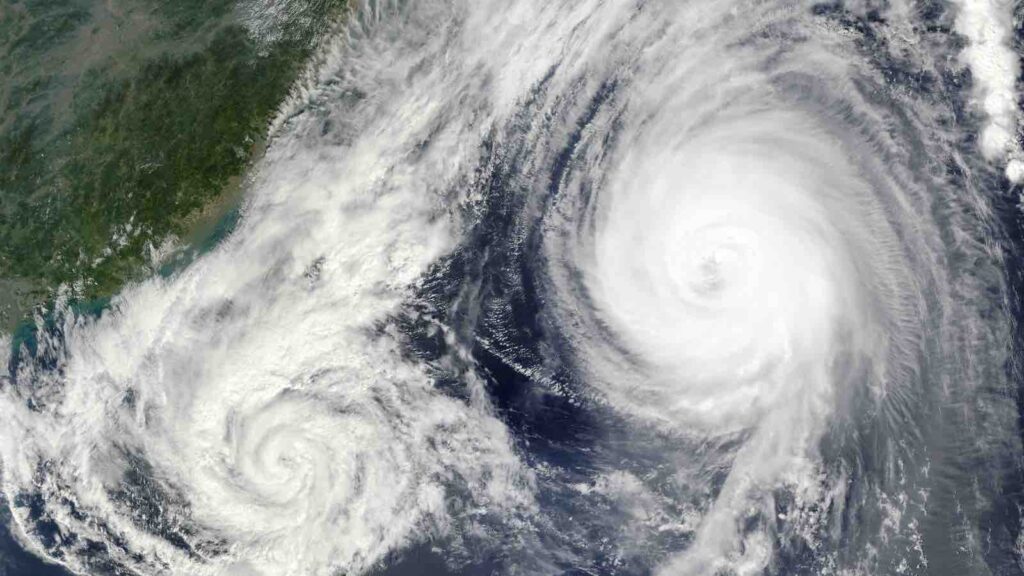The country’s schools are bracing for a new climate change challenge ahead of the start of the typhoon season in Southeast Asia.
MANILA — Just weeks after thousands of Filipino students were sent home from sweltering classrooms due to a brutal heat wave, schools across the country are preparing to face a new climate change challenge as Southeast Asia’s typhoon season approaches.
RELEVANT SUSTAINABLE GOALS



Schools were closed for several days in April and May when temperatures soared beyond 40 degrees Celsius (104 degrees Fahrenheit). With the reopening scheduled for July instead of August, authorities have readjusted the educational calendar to adapt to extreme weather conditions.
Typhoon Season Starts in July
The imminent threat comes from storms, as the typhoon season begins in July. In the past, schools have had to suspend classes and send students home due to flooded classrooms, while also frequently serving as temporary evacuation centers. The weather bureau warns that the Philippines is likely to experience more tropical cyclones in 2024 compared to the previous year, owing to the potential return of the La Niña weather phenomenon between June and August.
After the extreme conditions caused by the global El Niño this year, weather forecasts now predict a transition to the generally cooler La Niña conditions in the coming months, carrying increased risks of flooding and drought.
Meteorologists in the Philippines predict stronger and more destructive storms due to climate change, compounding the challenges for the country’s 47,000 public schools. Beyond the potential damage to physical infrastructure, there are concerns that extreme weather will widen the educational gap, as students forced to rely on online learning during school closures will disproportionately impact the most disadvantaged.
“It’s very difficult when classes are suspended due to disasters, and we cannot understand the lessons well at home,” said Prince Rivera, a 15-year-old student at Bulihan National High School in Bulacan province, near the capital Manila. Prince’s school has been flooded multiple times, and he was also sent home during the recent heat wave.
Xerxes de Castro, Basic Education Adviser at Save the Children Philippines, emphasized that awareness of climate risks is the first step towards making schools resilient to future disasters. “I think now is the right time for schools, students, and all stakeholders to learn about the impacts of climate change. It’s a hard lesson,” he said.
The Philippines, ranked as the world’s most disaster-prone country in the 2022 and 2023 World Risk Index, is hit by around 20 typhoons annually. Between 2021 and 2023, various disasters damaged around 4,000 schools, disrupting the learning process for two million students.
Educational authorities have leveraged technology to aid in addressing extreme weather and climate-related natural disasters. One such tool is the Rapid Assessment of Damages Report (RADaR) mobile and web application, now used by teachers to provide real-time updates when their schools are affected by disasters.
Launched by the Department of Education in collaboration with Save the Children and the Prudence Foundation, the app reports on six different types of natural disasters, including storms and typhoons. “Since its nationwide rollout in September 2021, more than 30,000 schools have used RADaR in the face of 28 disaster events,” said Marlon Matuguina, Save the Children Philippines’ Risk Mitigation and Climate Resilience Manager, as quoted by The Straits Times on Wednesday.
While heat wave monitoring has yet to be incorporated into the app due to the difficulty in measuring the impact of extreme heat, the data from RADaR indicates that earthquakes are the most frequently experienced hazard by schools, while tropical storms receive the highest number of reports due to the damage caused.
According to Save the Children, RADaR has so far generated over 154,000 school-level reports, providing new insights into the education sector’s vulnerability to hazards.
Teacher Shago Dela Cruz, the disaster coordinator at Prince’s school, said that before the introduction of RADaR, disaster reporting was slow, but the app now allows him to monitor and record disasters online through the school’s CCTV.
“Teachers don’t need to go to school after a disaster and face the risks,” he said.
TOWARDS CLIMATE RESILIENT EDUCATION SYSTEMS
Preparedness is key, and the Philippine Department of Education plans to invest in insulation, shading, and ventilation systems to enable students to remain in school during hot weather. The department has received 17 billion pesos ($391.3 million) from this year’s national budget to construct classrooms capable of withstanding higher temperatures.
The World Bank has approved a 30 billion peso ($687 million) loan to help the country better address disasters and climate threats, with a specific focus on schools and hospitals. The Philippine government says the funds will be used to rebuild damaged schools outside the capital due to natural disasters.
The project, scheduled from 2025 to 2029, is expected to benefit more than 13,000 classrooms and around 740,000 students whose buildings were damaged by disasters between 2019 and 2023.
For Save the Children, the message is clear: vulnerable nations need more support to bolster essential services like schools in an increasingly hot and wet world. The required changes go beyond bricks and mortar.
“Resilience is a complex issue. We’re not just talking about infrastructure work but also ensuring that teachers and students can cope with any kind of disaster that may happen in the future,” said Xerxes.
You may also be interested in :
Philippines Halts In-Person Classes Amid Sweltering Heatwave And Protests



